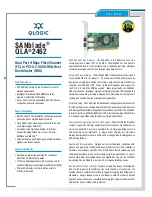
38
D-Link DHP-W307AV User Manual
Section 3 - Configuration
Advanced Wireless
Transmit Power:
Beacon Period:
DTIM Interval:
RTS Threshold:
Fragmentation
Threshold:
WMM Enable:
Short GI:
IGMP Snooping:
WLAN Partition:
Sets the transmit power of the antennas.
Note:
Transmit power is regulated by international
standard. Users are forbidden to change its maximum limit.
Beacons are packets sent by an access point to synchronize
a wireless network. Specify a value. 100 is the default
setting and is recommended.
(Delivery Traffic Indication Message) 1 is the default setting.
A DTIM is a countdown informing clients of the next window
for listening to broadcast and multicast messages.
This value should remain at its default setting of 2346.
If inconsistent data flow is a problem, only a minor
modification should be made.
The fragmentation threshold, which is specified in bytes, determines whether packets will be fragmented. Packets exceeding
the 2346 byte setting will be fragmented before transmission. 2346 is the default setting.
WMM is a Quality of Service (QoS) system for your wireless network. Enabling this feature will improve the quality of video
and voice applications for your wireless clients.
Check this box to reduce the guard interval time therefore increasing the data capacity. However, this setting less reliable
and may create higher data loss.
Select this checkbox to enable IGMP snooping. IGMP snooping is a layer 2 feature which enables the device to learn Multicast
group membership based on IGMP messages passing through the built-in switch. Because the switch learns the IGMP
messages and knows which clients are involved in the multicast group membership, it is able to forward multicast traffic only
to the ports that requested for it (based on their membership).
Select this checkbox to enable WLAN partition. If this feature is enabled, then there is no barrier between communication
among wireless stations connecting to the Access Point. If this is disabled, wireless clients are not allowed to exchange data
through the Access Point.
















































